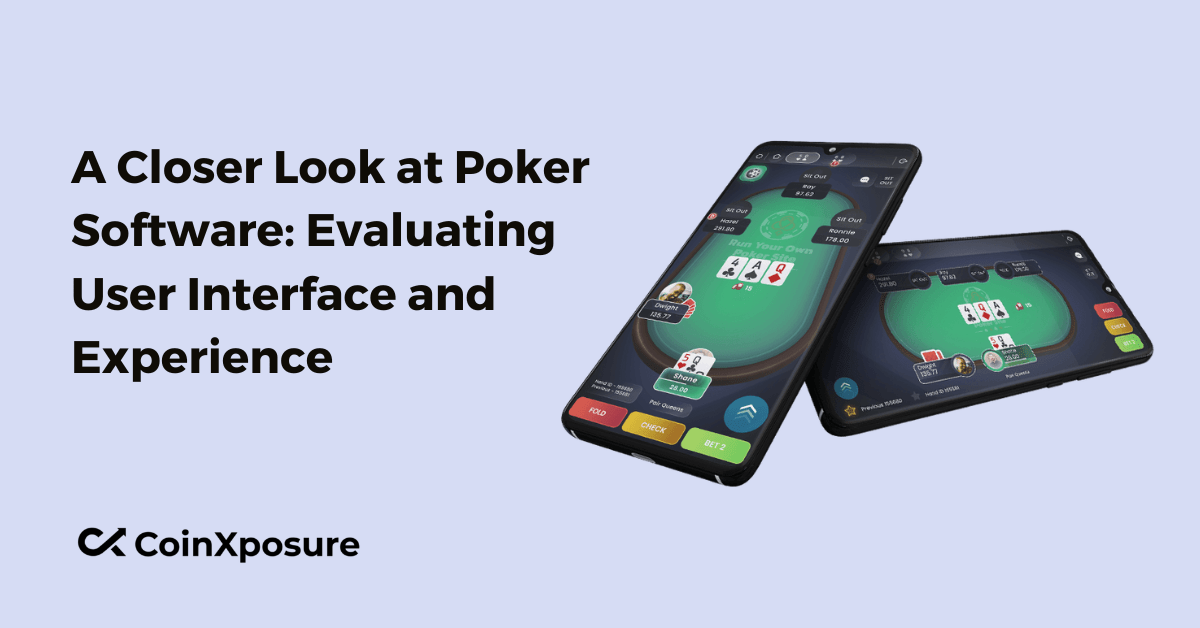
A Closer Look at Poker Software: Evaluating User Interface and Experience
Welcome to “A Closer Look at Poker Software: Evaluating User Interface and Experience.” In the dynamic world of online poker, the quality of software plays a pivotal role in shaping players’ interactions and overall satisfaction.
This exploration delves into the intricate balance between User Interface (UI) and User Experience (UX) within poker software, examining how design elements contribute to accessibility, engagement, and the seamless flow of gameplay.
Join us as we navigate the digital card tables, evaluating the visual aesthetics, navigational intuitiveness, and the broader user-centric aspects that define a compelling poker software experience.
User Interface in Poker Software
User Interface (UI) in poker software serves as the visual and interactive gateway to the digital card-playing experience. Key components include:
- Visual Aesthetics
- Intuitive Navigation
- Customization Options
Visual Aesthetics
Striking a balance between a visually appealing design and practicality enhances the overall user experience. Clear card graphics, intuitive icons, and thematic cohesion contribute to an engaging UI.
Intuitive Navigation
Easy navigation is paramount. Players should seamlessly access various features such as tables, game formats, and settings. Intuitive button placements and logical menu structures enhance user efficiency.
Customization Options
Offering players the ability to personalize their interface, from table themes to card styles, empowers users and fosters a sense of ownership over their gaming environment.
A well-crafted UI attracts players and ensures that both novices and experienced users can easily navigate the software, ultimately contributing to a positive and enjoyable poker experience.
User Experience in Poker Software
User Experience (UX) in poker software is players’ holistic encounter during gameplay. It involves various factors that contribute to overall satisfaction:
- Seamless Gameplay Experience
- Game Flow and Structure
- Social and Interactive Features
- Player Feedback and Satisfaction
Seamless Gameplay Experience
Speed and responsiveness are crucial. Efficient software that minimizes delays and lag ensures that players can focus on the game, creating a smooth and immersive experience.
Game Flow and Structure
Clear game rules, logical progression, and well-structured tournaments or rounds contribute to a positive UX. Predictable flow and well-defined structures help players stay engaged.
Social and Interactive Features
Incorporating chat functionalities, multiplayer interaction, and features that foster a sense of community contribute to a more enjoyable experience. Social aspects enhance the overall engagement for players.
Player Feedback and Satisfaction
Effective feedback mechanisms and responsive customer support contribute to a positive user experience. Regular updates that address user concerns and incorporate valuable suggestions enhance player satisfaction.
In essence, a successful poker software prioritizes user experience, creating an environment where players enjoy the game and feel connected, supported, and immersed in the digital poker community.
Evaluating Poker Software
Evaluating poker software involves assessing User Interface (UI) and User Experience (UX). Key considerations include:
UI Assessment Metrics
- Responsiveness: Evaluate the software’s speed and how quickly it responds to user actions.
- Consistency: Ensure a uniform design across various screens and elements for a cohesive visual experience.
- Clarity: Assess the clarity of information presentation, from card graphics to on-screen notifications.
UX Evaluation Metrics
- Player Retention: Analyze the software’s ability to retain and engage players over time.
- Customer Reviews: Scrutinize user reviews for insights into the overall satisfaction and common pain points.
- User Feedback Channels: Evaluate the presence and effectiveness of channels for users to provide feedback and report issues.
Case Studies
- Examine popular poker software through case studies, considering user testimonials and conducting a comparative analysis of UI/UX features.
- Assess how these platforms balance accessibility for beginners and efficiency for experienced players.
Challenges and Future Trends
- Identify common challenges in UI/UX design, such as finding the right balance between simplicity and advanced features.
- Explore emerging trends, like the integration of AI for personalized experiences and optimization for mobile platforms.
Evaluating poker software requires a comprehensive analysis of its design, functionality, and user satisfaction metrics, providing insights into the strengths, weaknesses, and potential areas for improvement.
Challenges and Future Trends
Challenges in Poker Software Design:
- Balancing Simplicity with Advanced Features: Striking a balance between providing essential features for beginners and offering advanced functionalities for experienced players poses a significant challenge.
- Adaptation to Evolving User Preferences: Meeting the evolving expectations and preferences of a diverse player base requires continuous updates and responsiveness to emerging trends.
Future Trends in Poker Software Design:
- Integration of AI for Personalized Experiences: Implementing artificial intelligence to tailor the gaming experience based on individual player preferences, skill levels, and playing styles.
- Mobile Optimization and Cross-Platform Compatibility: Recognizing the increasing prevalence of mobile gaming and ensuring seamless experiences across various devices, including smartphones, tablets, and desktops.
- Enhanced Social Features: Further integration of social elements, such as live chat, virtual interactions, and shared experiences, to create a more immersive and community-driven environment.
- Innovations in Graphics and Virtual Reality: Exploring advancements in graphics and potentially incorporating virtual reality to elevate the visual and immersive aspects of online poker.
Navigating these challenges and embracing future trends will be crucial for poker software developers to stay competitive, ensuring that their platforms continue to meet the evolving demands and expectations of players in the dynamic online gaming landscape.
Conclusion
The world of online poker is intricately linked to the quality of its software, with a profound impact on the gaming experience. Our exploration into the evaluation of poker software, focusing on User Interface (UI) and User Experience (UX).
In navigating these considerations, poker software developers have the opportunity to not only meet current player expectations but also to innovate and stay ahead in an ever-evolving digital gaming landscape.
The fusion of intuitive design, seamless functionality, and a commitment to user satisfaction will continue to define successful and engaging poker software experiences.





